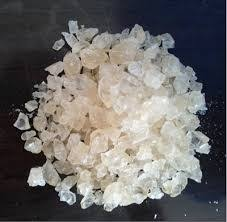Dimethylphenidate (DMPH) is a psychostimulant and a derivative of methylphenidate (MPH), commonly known by its brand name, Ritalin. While MPH is widely recognized for its use in treating Attention Deficit Hyperactivity Disorder (ADHD) and narcolepsy, DMPH is less known but shares similar properties. This compound has garnered interest for its potential therapeutic benefits and its role in research into psychostimulant drugs.
Chemical Structure and Properties
Dimethylphenidate is a chemical compound with the molecular formula C15H21NO2. It is structurally similar to methylphenidate, with the primary difference being the presence of two methyl groups attached to the nitrogen atom in the piperidine ring. This slight modification alters the compound’s pharmacokinetics and pharmacodynamics, affecting its potency, duration of action, and metabolic pathways.
DMPH appears as a crystalline solid, often in the form of fine, white crystals. Its crystalline nature affects its solubility and bioavailability, making the crystal form a subject of interest for pharmacological studies and drug formulation.
Pharmacology and Mechanism of Action
Dimethylphenidate acts as a central nervous system (CNS) stimulant. Its primary mechanism of action involves inhibiting the reuptake of dopamine and norepinephrine in the brain. By blocking the dopamine transporter (DAT) and norepinephrine transporter (NET), DMPH increases the concentrations of these neurotransmitters in the synaptic cleft, enhancing dopaminergic and noradrenergic transmission.
This action results in improved attention, increased alertness, and reduced fatigue, which are beneficial effects for individuals with ADHD and other conditions characterized by impaired cognitive function and alertness.
Pharmacokinetics
The pharmacokinetic profile of dimethylphenidate differs slightly from that of methylphenidate. After oral administration, DMPH is rapidly absorbed, with peak plasma concentrations occurring within one to two hours. Its bioavailability and half-life can vary depending on individual metabolic differences and the presence of other substances that may affect its metabolism.
DMPH undergoes extensive hepatic metabolism, primarily through hydrolysis and oxidation. The metabolites are then excreted primarily via the urine. The compound’s metabolic pathways are similar to those of methylphenidate, involving enzymes such as carboxylesterase 1 (CES1) and cytochrome P450 (CYP) enzymes.
Therapeutic Uses
While methylphenidate is well-established in clinical use, dimethylphenidate is less commonly prescribed. However, it holds potential for similar therapeutic applications. The primary uses of DMPH include:
- Attention Deficit Hyperactivity Disorder (ADHD): DMPH can help manage symptoms of ADHD by improving focus, attention span, and impulse control.
- Narcolepsy: DMPH may be used to reduce excessive daytime sleepiness and improve wakefulness in individuals with narcolepsy.
- Cognitive Enhancement: There is interest in DMPH for off-label use as a cognitive enhancer, although this application is controversial and not widely recommended due to potential risks and side effects.
Side Effects and Risks
Like other CNS stimulants, dimethylphenidate carries the risk of side effects. Common side effects include:
- Cardiovascular Issues: Increased heart rate, elevated blood pressure, and palpitations.
- Psychiatric Symptoms: Anxiety, agitation, and insomnia.
- Gastrointestinal Disturbances: Nausea, vomiting, and loss of appetite.
More severe side effects can occur, particularly with misuse or in individuals with underlying health conditions. These include:
- Cardiovascular Events: Heart attack, stroke, and sudden death in individuals with pre-existing heart conditions.
- Psychiatric Effects: Increased risk of psychosis, mania, and suicidal thoughts, especially in individuals with a history of mental health disorders.
- Dependency and Abuse: As a stimulant, DMPH has the potential for abuse and dependency. Its euphoric effects can lead to misuse, particularly in individuals seeking cognitive or performance enhancement.
Legal Status and Regulation
The legal status of dimethylphenidate varies by country. In the United States, it is classified as a Schedule II controlled substance under the Controlled Substances Act, reflecting its potential for abuse and dependency. Similar regulations exist in other countries, restricting its use to prescription only and requiring careful monitoring by healthcare providers.
Research and Future Directions
Research on dimethylphenidate is ongoing, with studies exploring its efficacy, safety, and potential new therapeutic applications. Some areas of interest include:
- Comparative Studies: Research comparing DMPH with other psychostimulants, including methylphenidate and amphetamines, to determine relative efficacy and safety profiles.
- Long-Term Effects: Investigations into the long-term use of DMPH, particularly in pediatric populations, to assess potential impacts on growth, development, and mental health.
- Alternative Formulations: Development of new formulations to improve the pharmacokinetic profile, such as extended-release versions to reduce dosing frequency and enhance compliance.
Dimethylphenidate crystal represents a fascinating area of study within the field of psychostimulant medications. While it shares many properties with methylphenidate, its unique chemical structure and pharmacokinetics offer distinct advantages and challenges. As research continues, DMPH may find broader therapeutic applications and contribute to a better understanding of CNS stimulants in treating cognitive and attentional disorders.
However, the potential for side effects, abuse, and dependency necessitates careful regulation and monitoring. Healthcare providers must weigh the benefits against the risks when considering DMPH for treatment, ensuring that it is used safely and effectively to maximize patient outcomes.
Contact Us
WhatsApp: +49 163 5048456
Email: info@purechemsonline.com
Website: https://www.purechemsonline.com/






No comments:
Post a Comment